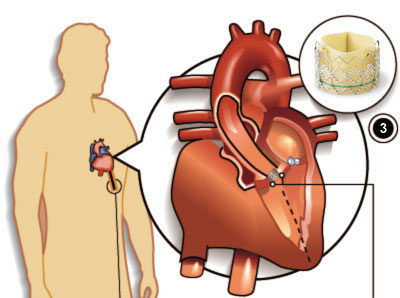Heart Valve Repair
Valve repair can usually be done on congenital valve defects (defects you are born with) and has a high success rate for treating mitral valve defects.
Severe valve damage means that the valve will need to be replaced. Valve replacement is most often used to treat aortic valves and severely damaged mitral valves. It is also used to treat any valve disease that is life threatening. Sometimes, more than
one valve may be damaged in the heart, so patients may need more than one repair or replacement.
one valve may be damaged in the heart, so patients may need more than one repair or replacement.
Here are some procedures San Antonio surgeons may use to repair a valve:
- Commissurotomy, which is used for narrowed valves, where the leaflets are thickened and perhaps stuck together. The surgeon opens the valve by cutting the points where the leaflets meet.
- Valvuloplasty, which strengthens the leaflets to provide more support and to let the valve close tightly. This support comes from a ring-like device that surgeons attach around the outside of the valve opening.
- Reshaping, where the surgeon cuts out a section of a leaflet. Once the leaflet is sewn back together, the valve can close properly.
- Decalcification, which removes calcium buildup from the leaflets. Once the calcium is removed, the leaflets can close properly.
- Repair of structural support, which replaces or shortens the cords that give the valves support (these cords are called the chordae tendineae and the papillary muscles). When the cords are the right length, the valve can close properly.
- Patching, where the surgeon covers holes or tears in the leaflets with a tissue patch.
Replacement
There are two kinds of valves used for valve replacement:
Mechanical valves, which are usually made from materials such as plastic, carbon, or metal. Mechanical valves are strong and long lasting. Because blood tends to stick to mechanical valves and create blood clots, patients with these valves
will need to take blood-thinning medicines (called anticoagulants) for the rest of their lives.
will need to take blood-thinning medicines (called anticoagulants) for the rest of their lives.

Tissue valves, which are made from animal tissue (called a xenograft) or taken from the human tissue of a donated heart (called an allograft or homograft). Sometimes, a patient’s own tissue can be used for valve replacement (called an
autograft). Patients with tissue valves usually do not need to take blood-thinning medicines. These valves are not as strong as mechanical valves, however, and they may need to be replaced every 10 years or so. Tissue valves break down even faster
in children and young adults, so these valves are used most often in elderly patients.
You and your doctor will decide which type of valve is best for you.
autograft). Patients with tissue valves usually do not need to take blood-thinning medicines. These valves are not as strong as mechanical valves, however, and they may need to be replaced every 10 years or so. Tissue valves break down even faster
in children and young adults, so these valves are used most often in elderly patients.
You and your doctor will decide which type of valve is best for you.
